
USA reservoir serves up skeletons, and boats, as water level drops rapidly
Declining water levels due to climate change and 20 years of ongoing drought are reshaping the shoreline of the biggest reservoir in the USA, and with it the boating habits of local residents.
As Lake Mead – on the border of Arizona and Nevada (fed by the Colorado River) – continues to recede, extending launch ramps becomes more difficult and more expensive due to the topography and projected decline in water levels, says the National Park Service.
The water drop has unearthed many secrets, including several skeletons.
A murder investigation has been launched after human remains from what could be the 1970s or ’80s were found in a barrel.
The Las Vegas Metropolitan Police Department believes the victim died from a gunshot wound and that, based on the clothing and footwear the victim was found with, the killing happened in the mid 1970s to the early 1980s. Further skeletal remains were uncovered less than a week later in another part of the lake, which once stretched 112 miles.
The situation is being documented by many YouTubers.
According to Sin City Outdoors (SCO) who shared the sequence of images below: “A lot of people are getting nervous because the water level is dropping really fast.
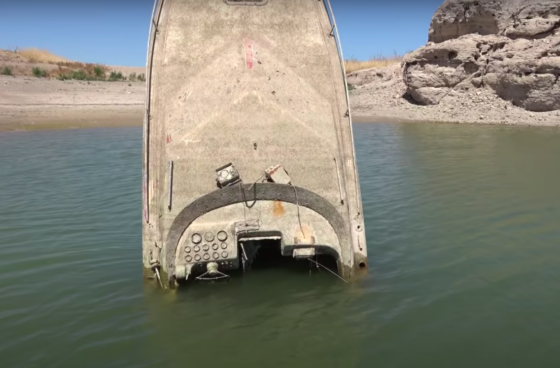 Mid May 2022
Mid May 2022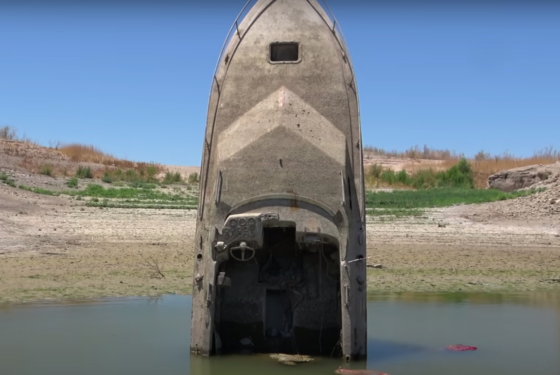 End May 2022
End May 2022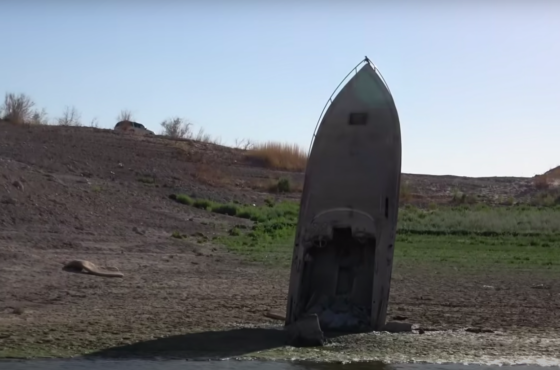 Mid June 2022
Mid June 2022“Five or six [boat] launches were open about four months ago, they’ve all shut down. I was barely able to launch my boat last time. There’s one [launch] left.” And that launch can only take boats 24 feet and under, and only shallow runners.
SCO says it had to queue for two hours to launch, and that’s because it was there early. Many are queueing for four hours to get on the water, and then the same to get off.
“The area is experiencing the worst mega-drought for 1,000 years,” the team says. It expects the current, and only remaining, launch to be out of action in about two weeks if the water continues to drop as it has been.

SCO came across a man whose 42 foot houseboat got stranded. The owner says he was out on the houseboat fishing, the engine stalled, and he pulled over to the edge of the lake to wait for a mechanic. Within a day or two – with no sign of the mechanic – he was stuck.
“I went fishing, now I’m camping,” he says. He was in four feet of water, and then two weeks later he was completely out of it. After SCO posted its video, the houseboat was refloated with the help of a wide volunteer community.
“This is a massive lake, you can drive a boat fifty miles,” says SCO, “which what makes it interesting that it’s dropping at such a massive rate.” The images below, which SCO says are taken a month apart, illustrate the drop. It’s the same boat.
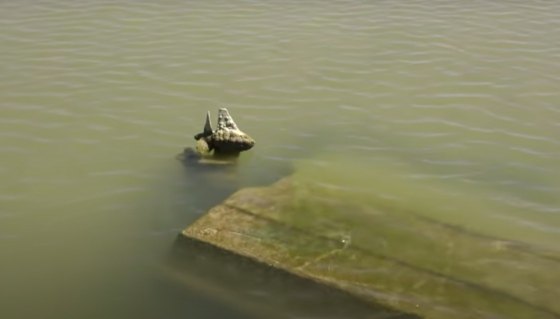 End May 2022
End May 2022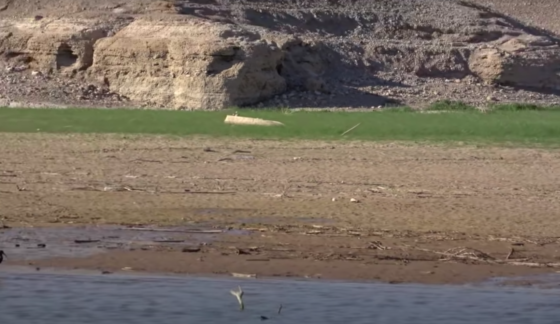 End June 2022
End June 2022
The question of what to do with boats when you can’t launch them has been raised by YouTube channel, Remote Trooper.
He calculates that the lake is dropping ten feet per month and with boaters having to wait four hours to launch, and that ramp being very shallow, people will be dumping their boats in the desert.
“What are options? The city dump says ‘no’, you can’t sell it, or launch it, and you don’t want to pay for storage. I’m guessing whoever owned this boat had no other option but to dump it here,” he says.

Image courtesy of Remote Trooper
The lack of water means that after 39 consecutive WON Bass US Opens (fishing tournament) have been held at Lake Mead, the 2022 event is moving to Lake Mohave. With boat launching conditions at Mead currently rated as poor and with all predictions forecasting even more dire conditions coming this autumn, tournament director Billy Egan officially made the decision to move the event to Mohave in May 2022.
“It was a tough call and one that I’d hoped to never have to make, but at this point it was the only call to be made,” Egan says. “It’s just a really tough situation at Lake Mead right now as most people are aware, and the conditions simply won’t be feasible in October to successfully put on such an important event of this size and scope.”
Currently, the reservoir levels are as low as they were in 1936 when it was developed.
Natural News reports that since the beginning of March, Lake Mead has dropped by more than 23 feet, which is astounding considering its massive size – from one end to the other, Lake Mead stretches over 100 miles.
The website says that Lake Mead has been dropping for many years and that over time, the level of the lake drops exponentially more quickly, unearthing submerged boats and other debris.
And it won’t be long before the danger zone of 895 feet is reached, which is the point water would no longer pass through Hoover Dam to supply California, Arizona, and Mexico. This is when the lake would be considered a ‘dead pool’.
With this in mind and the low level of the Colorado River which supplies Lake Mead, the federal government has taken the unprecedented step of telling the seven Western states that rely on the river to find ways of drastically cutting the amount of water they take in the next two months, according to the LA Times.
“We have urgent needs to act now,” says Tanya Trujillo, the interior department’s assistant secretary for water and science. “We need to be taking action in all states, in all sectors, and in all available ways.”
“The Colorado River Basin faces greater risks than any other time in our modern history.
“There is much more work to be done in the basin because the conditions continue to worsen and deeper shortages are projected. We need to do more than we’ve ever done before.”
The surface of Lake Mead now stands at 1,045 feet above sea level. It’s forecast to drop more than 26 feet by July 2023.
Trujillo says she remains optimistic “that we can get through this.” But she also said it’s a “very, very sobering situation.”
“We are facing the growing reality that water supplies for agriculture, fisheries, ecosystems, industry and cities are no longer stable due to climate change.
“We’re going to have to be very creative and develop a large list of potential options. We’re going to likely be in a situation of doing things we’ve never done before. And we’ll have to have guts to be able to move forward.”
State officials and managers of water agencies have yet to determine how they could accomplish such large reductions in water use. Finding ways of achieving the cutbacks will be the focus of negotiations in the coming weeks between the Biden administration and representatives of the seven states — Colorado, Wyoming, Utah, New Mexico, Arizona, Nevada and California, says the LA Times.
All images – unless specified otherwise – courtesy of Sin City Outdoors.
